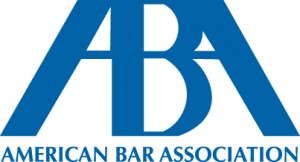First Monday Musings By Dean Vik Amar: A Guided Tour Through The Debate Over Changing The ABA Employment Data Form
It's a complicated mix of arguments about substantive policy, procedural thoroughness, and outside perception.
 It is, I think, a sign of the lingeringly tight job and law school applicant markets that over the past few weeks many law deans have been weighing in on a contentious change in the form the American Bar Association (ABA) uses to record and communicate employment outcomes for each law school’s most recently graduated class. As I explain below, the issue involves a complicated mix of arguments about substantive policy, procedural thoroughness, and perceptions by the outside world.
It is, I think, a sign of the lingeringly tight job and law school applicant markets that over the past few weeks many law deans have been weighing in on a contentious change in the form the American Bar Association (ABA) uses to record and communicate employment outcomes for each law school’s most recently graduated class. As I explain below, the issue involves a complicated mix of arguments about substantive policy, procedural thoroughness, and perceptions by the outside world.
As other commentators, such as Kyle McEntee (for this website) and Jerry Organ (on TaxProf Blog), have documented in great detail, the ABA Council on Legal Education earlier this summer amended the form to be used to depict employment results, beginning with the Class of 2017. The amendments are supposed to promote simplification, but in addition to containing technical mistakes the new form collapses certain categories that many observers think deserve separate treatment. For example, the new form lumps together all law firms that employ 100-500 lawyers, even though some folks think that a firm of 101 lawyers is qualitatively different than one that has 350 lawyers. Much more controversially, the new form does not – in a way the old form did – display the number of jobs a school’s graduates hold that are funded by the law school itself and that are open only to graduates of that law school, so long as the job lasts a year and pays $40,000. So-called “school-funded” jobs have been a contentious issue for several years, and it is thus unsurprising that when people found out what the Council had done to alter the reporting of such jobs, many folks sat up and took notice.
Substantive Merits:

Legal AI: 3 Steps Law Firms Should Take Now
Some deans (often from schools that have a significant number of school-funded positions, which causes many to discount their views but that also means these deans know about at least some of these jobs) argue that school-funded jobs that pay a decent wage should not be “discriminated against” by separate treatment on the ABA form. They point out that: (1) many school-funded jobs consist of public interest fellowships; (2) $40K is a representative salary for public interest fellowships generally; (3) the ABA should be encouraging public interest; (4) many if not most of these fellows go on to get decent jobs a year later, and some third-year students pursue a school-funded fellowship even if they could have gotten a (sometimes high-paying) job in the private sector straight out of school; (5) there are other ways consumers can find out about the number and nature of school-funded jobs, at least at some schools; and (6) if the school-funded jobs are treated separately on the form, then U.S. News, for purposes of its rankings, will discount such jobs, which wrongly discourages schools from offering these jobs.
On the other side, many deans argue that: (1) school-funded jobs have been a source of unproductive manipulation by schools in the not-so-distant past and that we should therefore keep an eye on them, which requires gathering and reporting data on them; (2) there is a categorical difference between jobs that are open to all applicants and jobs that are limited to a school’s own graduates, and the world is entitled to know how many of a school’s graduates have jobs that were not open to general competition; (3) not all school-funded jobs involve public interest at all; (4) more generally, school-funded jobs vary by school, and we should not assume that all schools act honorably with respect to them; (5) the ABA should not concern itself with what use U.S. News may or may not make of relevant, nonmisleading data for the public; and (6) it would be a simple enough matter to break school-funded jobs into two separate categories – school-funded jobs reserved for home-grown graduates but that pay $40K, and those that pay less – so that schools could then make the case directly to U.S. News and others that the former subcategory should not be discounted vis a vis jobs funded by the outside world.
I leave it to readers themselves to decide which set of arguments is more persuasive.
Process Concerns:
Sponsored

Legal AI: 3 Steps Law Firms Should Take Now

The Business Case For AI At Your Law Firm


Early Adopters Of Legal AI Gaining Competitive Edge In Marketplace

Navigating Financial Success by Avoiding Common Pitfalls and Maximizing Firm Performance
In addition to the substantive question of what the form should look like, many, many observers object to the truncated process the ABA Council used to make the changes, ostensibly to clarify the form. I think these process criticisms have merit. There are many ways to clarify the form (see #6 in the second set of deans’ arguments above) that wouldn’t involve melding all $40K school-funded jobs with non-school-funded jobs. Notably, the short memo the Council considered that argued in favor of a new, streamlined form never even discussed whether jobs that are reserved for a school’s own graduates should be collapsed with those that are open to all applicants throughout the country. Also, there was no notice and comment period on the need for or specific proposals for amendment. And so forth.
To be honest, I have not seen or heard any dean really defend the abbreviated and private process that led to these important substantive changes.
Optics:
All of that brings me to a comment voiced by many deans – that it looks terrible to cut back on the finely grained information provided by the form (even if the form needs some clarifying tweaks) at a time when members of public (and regulators in government) remain somewhat skeptical about the way some law schools have conducted themselves in the last two or three years as the job and application markets have shrunk. As just one indicator of the level of public interest, consider that Jerry Organ’s TaxProf Blog piece mentioned above – which is sharply critical of the substance and procedure behind the Council’s revisions of the form – garnered over 6,000 “shares” in just three or four days after it was posted. Given that there are fewer than 500 law deans/career service department heads who work directly on this seemingly technical, inside-baseball, kind of issue (and paying due respect to the TaxProf Blog, which I consult myself not infrequently), that’s a lot of eyeballs. Practicing lawyers, judges, prospective law school applicants, government officials, and others are still watching law schools very carefully, and we should be mindful of that. (I might point out that a similarly interesting blend of substantive, procedural, and optical arguments characterizes the debates raging in California over whether its “cut-score” — the passing threshold for its bar exam — should be lowered.)
Better News:
Sponsored

Is The Future Of Law Distributed? Lessons From The Tech Adoption Curve

Navigating Financial Success by Avoiding Common Pitfalls and Maximizing Firm Performance
To the extent that these matters are heavily influenced by job and admissions markets, let me highlight two positive developments over the summer: (1) Given smaller entering and graduating class sizes in recent years, the Class of 2016 had a higher percentage employed in full-time, long-term, law jobs than did the Class of 2015, and projections for the Class of 2017 are that this metric will improve a bit more; and (2) the number of LSAT takers in June 2017 was up about 20 percent from June 2016, with the registration for the September 2017 test administration also apparently up double digits from last year.
ABA Legal Ed Council Approves Changes To Employment Report That Erode Transparency [TaxProf Blog]
Earlier: ABA Takes Giant Step Backwards On Transparency
 Vikram Amar is the Dean of the University of Illinois College of Law, where he also serves the Iwan Foundation Professor of Law. His primary fields of teaching and study are constitutional law, federal courts, and civil and criminal procedure. A fuller bio and CV can be found at https://www.law.illinois.edu/faculty/profile/VikramAmar, and he can be reached at amar@illinois.edu.
Vikram Amar is the Dean of the University of Illinois College of Law, where he also serves the Iwan Foundation Professor of Law. His primary fields of teaching and study are constitutional law, federal courts, and civil and criminal procedure. A fuller bio and CV can be found at https://www.law.illinois.edu/faculty/profile/VikramAmar, and he can be reached at amar@illinois.edu.







